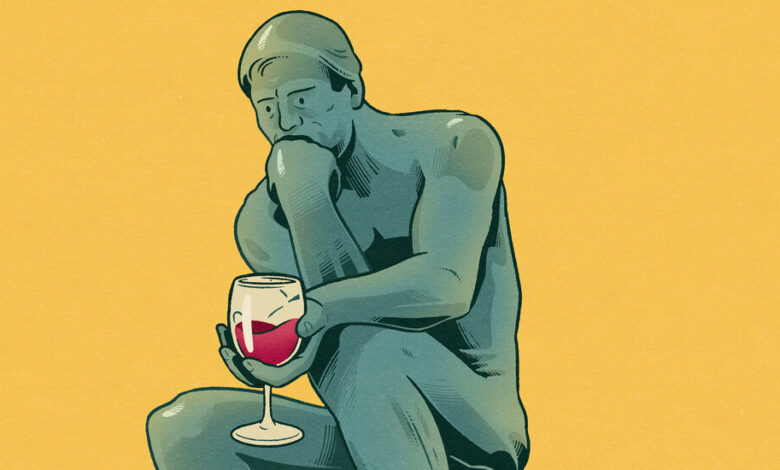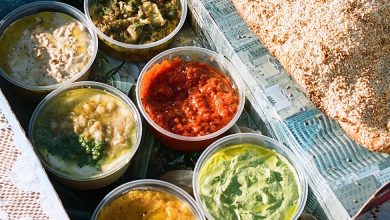Four Ways to Think About Wine

Drinking is thinking. That is, the way you think about wine affects what you choose to drink and how you generally approach wine.
To give wine any thought at all is optional. Many people see it simply as a means to an end, whether a weekend pleasure, a social lubricant or an alcohol delivery system. As with orange juice or diet cola, in their minds, it’s not worth much reflection beyond selecting a favorite brand.
But if you find wine intriguing, and would like to choose and drink better bottles, one of the easiest and most direct methods is to adjust your mind-set. Here are four ideas that will make wine a deeper and richer experience.
Think of Wine as Coming From the Earth
It’s all too tempting to equate wine with the store. By the time a bottle of good wine reaches a merchant, it has already been on a long journey that began in a vineyard. So, remember that wine is something that comes from the earth rather than from a shelf.
While that may seem like a truism, it’s not obvious to a lot of people, and, as far as wine goes, it’s far from a universal truth. Yes, all wines are made from grapes. But most wine is more industrial than agricultural, manufactured from factory-farmed grapes that are manipulated in the winery to meet carefully tailored specifications derived from focus groups and other consumer research.
Wine that is processed in order to meet a preconceived flavor profile does not meet my definition of good or desirable.
With good wine, the hard work is done by the farmer, whose aim is ripe grapes capable of expressing the distinctive characteristics of a vineyard. It’s a risky enterprise, in contrast to industrial farmers who prize production over quality.
Fearing pests, maladies or anything that might interfere with a bountiful harvest, they generally farm with fertilizers, herbicides and other chemicals to fend off threats, regardless of the damage such practices might do to the soil, environment or the wine.
Conscientious farmers, on the other hand, avoid these harsh methods. Their approach, whether organic, biodynamic or something else, is intended to create the best possible habitat for expressive grapes to thrive by strengthening the soil and the surrounding environment.
Think of Wine as Food
The logical next step is to treat wine as you would food. Too often, people never make this leap.
Consumers who otherwise shop carefully, avoiding processed, chemical-laden foods in favor of simple ingredients grown organically or the equivalent, think nothing of adding processed wines to their shopping carts.
Instead, imagine wine as another staple for the table, applying the same standards to it as you do to the other ingredients you bring into your home.
Unfortunately, it’s not simple with wine. You cannot look at the ingredients label as you might with other foods, as wine is not required to list ingredients. Instead, shop at stores that care about the quality of wines they sell. These stores will often do the hard advance work of separating and rejecting the processed wines in favor of good bottles.
Sure, it might be inconvenient to go to a specialty shop rather than the supermarket for wine. But if you care enough about produce to shop at farmers’ markets, about meat and bread to seek out good butchers and bakers, why not apply the same criteria to wine?
Think of Wine as an Adventure
When you open a bottle of good wine, you don’t always know what you are in for. That unpredictability is part of the fun.
This goes against the grain for many people, which I understand. The desire for predictability and consistency is why we have franchise restaurants on interstate highways that all look the same whether in New England, the Pacific Northwest or the Deep South.
That sort of mass culture is the result of the quest for commercial efficiency. Good wine requires taking the exit ramp off the interstate to what the author William Least Heat-Moon called “Blue Highways,” the back roads where local culture is most evident.
Good wine is always local in nature. It may travel halfway around the world to be consumed far from its inception, but its appeal has much to do with what it reveals about its place of origin, just as the small town mom-and-pop cafe tells you more about where you are than any franchise restaurant ever could.
The American food revolution of the 1970s was very much an exploration of regional cuisines. It was a rebellion that valued the hyperlocal over generic forms of dining like TV dinners and continental restaurants. Generations of diners have now found great pleasure in getting away from the familiar and predictable in favor of the surprise of new discoveries.
This is part of the joy of wine. Unexpected flavors and textures may lead you to new and different discoveries, expanding your realm of experience and adding to your understanding of what’s possible and what’s wonderful.
Familiar comforts will always have their place, and even they can lead in unexpected directions if, for example, they reflect the idiosyncrasies of a particular vintage. Like interesting people, good wines are characters. They may not speak in news anchor tones, but they always have something interesting to say.
Think of Good Wine as Analog
Good wine will always have incongruities, modest warts and blemishes. These irregularities can be delightful, because the beauty of a wine is not measured by whether it approaches perfection. It’s conveyed by its soulfulness, by its individuality and distinctiveness. Good wine has warmth and character, like the analog recordings that I find far more appealing than the often-cold perfection of digital.
This is not to say that digital recording is all bad. Digital, like manipulative winemaking, offers the possibility of constructing a finished product of disparate parts. Though it might sound great in the end, its artificiality can often be felt.
Many people will not have a problem with that. They might wonder what else matters if the result sounds great, just as some wine drinkers might ask why anything else matters but the wine in the glass.
The other things do matter. Many digital recordings, for example, use Auto-Tune, a technology that can change a singer’s pitch if it strays off-key, but which might alter the swoops and wavers that give a voice character. With digital technology, producers can replace bum notes or inadvertent sounds. Imperfections are eliminated.
Often, though, the greatness of a recording, like wine, transcends whatever mistakes it contains. It’s the feeling, the energy and vibe that comes through impassioned performance. The little defects add to the character.
Great wine, in a sense, is a recording of a time and place as interpreted by the people who grew the grapes and made the wine. When it’s altered in production, the wine no longer offers a faithful documentation. The result might be delicious, but it’s lost a dimension of its character.
Analog recordings can be manipulated, too. Producers can amplify the drums, reduce the bass and put the voices front and center. They are not changing the distinctive character of the recording, though. As with good wine, it was all there to begin with.
What makes a wine distinctive? It’s not easy to know without experience. With wine, context is vital. This applies both to the moment you open a bottle — whom you are with, the occasion, the food you are eating, the atmosphere and so on — and to your frame of reference, that is, the comparison of the wine you are drinking to those in your memory.
The more wines you drink, the wider your points of comparison. I’ve often said the best way to learn about wine is to open a lot of different bottles and pay attention to them. Not in an obsessive way, in which you note every impression that might cross your mind, but by perceiving a few salient details.
You can think of good wines like basketball players. It’s hard to understand the skills of, say, Stephen Curry in isolation. Only by watching him in the context of other N.B.A. players can you see his greatness as well as his weaknesses, as minor as they might be.
His combination of features makes him distinctive, unusual and immediately identifiable, just as a good wine will have its own, individual imperfect style.
Follow New York Times Cooking on Instagram, Facebook, YouTube, TikTok and Pinterest. Get regular updates from New York Times Cooking, with recipe suggestions, cooking tips and shopping advice.




